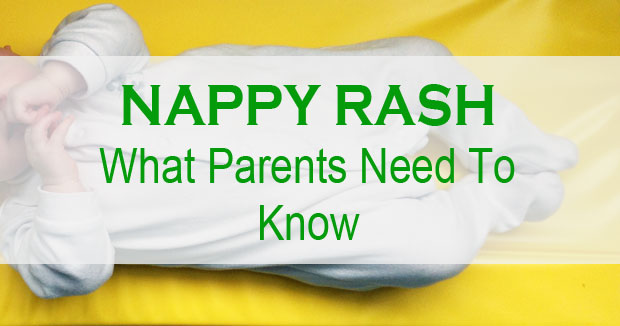Nappy Rash – What Parents Need To Know

Nappy Rash – What Parents Need To Know
By midwife and baby skincare expert Sharon Trotter
You may notice that babies are more likely to develop a nappy rash when they are poorly, when they are teething, or when you introduce solids during weaning. When teething, babies produce lots of saliva, which goes down into the tummy and seems to have an adverse affect on the gut. When poorly or teething, your baby’s temperature may be slightly raised, which can also impact on the digestive system. During weaning, some new foods may temporarily upset your baby’s tummy. Whatever the cause, frequent dirty nappies often occur during these situations, making nappy rash more likely.
How to tell if your baby has nappy rash
When changing your baby you may notice:
- red patches appear on your baby’s bottom, genitals and inner thighs
- raised spots in the red patches
- some scaling or shiny, broken skin
- that skin is sensitive, especially when you wipe the red patches
How to treat nappy rash
It is easier to prevent nappy rash than treat it. Here are my top tips:
- Make sure you wash your hands thoroughly before and after changing your baby’s nappy
- Change your baby’s nappy often as soon as it is wet or soiled (young babies may need changing as many as 10 times a day; older babies at least half a dozen times).
- After a nappy change, lay your baby on a towel or muslin for a little while for some ‘nappy free time’ before putting a clean nappy on.
- Dry baby’s skin well after cleaning, patting dry, before putting on a fresh nappy.
- Avoid using baby wipes for at least the first month as they can strip the skin of protective oils. Top and tail with plain water and cotton wool. By doing this, you’ll ensure that your newborn’s skin has time to develop its own natural barrier.
- For stubborn dirt that has dried on, an organic fragrance-free baby oil can be used for cleaning the skin and will be less stingy than wipes. After the first month, try to use wipes that do not contain alcohol, parabens, phthalates, artificial colours or perfumes.
- You may like to use a thin layer of barrier cream on the nappy area. Choose a cream that doesn’t contain any preservatives, colours, perfumes, or antiseptics, and is clinically proven to be effective in the treatment of nappy rash. (Weleda’s Calendula Nappy Change Cream is a good choice – Review here.)
- Always wash your hands before applying nappy balm. This will help reduce the risk of bacteria passing from your fingers to the product and ensure the nappy balm is effective for longer.
- Today’s washable nappies are as efficient as disposable ones and your baby is not more likely to develop nappy rash if you use these. Rinse washable nappies thoroughly so that detergent residues are kept to a minimum, and avoid fabric conditioners as these contain synthetic perfumes.
If the rash doesn’t clear up after 3 – 4 days or if it gets worse, speak to your health visitor or doctor. They may prescribe hydrocortisone or antifungal cream, or antibiotics, depending on the cause.
Thank you to Sharon Trotter for her helpful advice!




